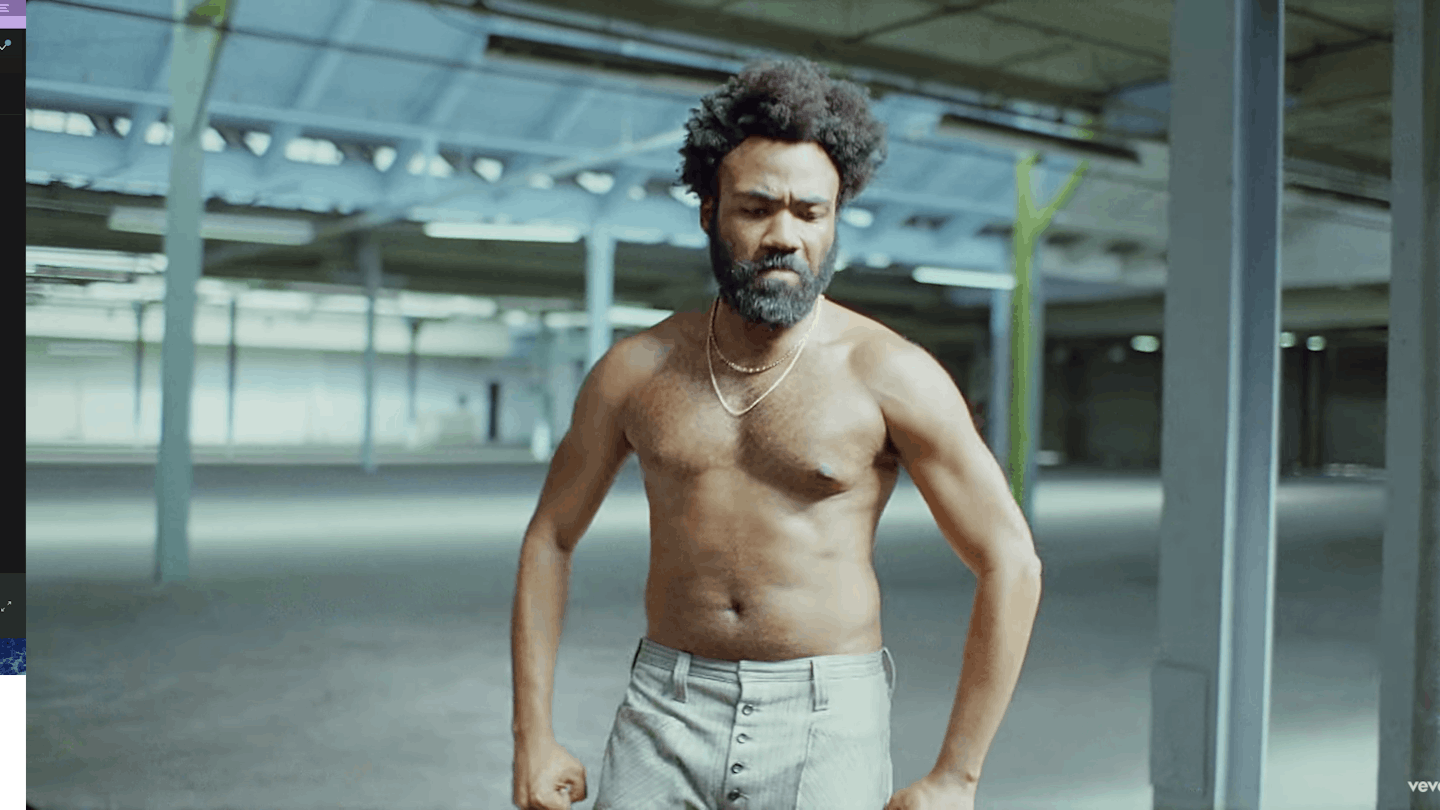Every now and again, incredible artists will have a ‘moment’. And we don’t mean those standard Friday morning single new releases that generate flutters of Spotify excitement, nor those ‘surprise’ album announcements we’ve come to anticipate on social media.
Right now we’re talking about culturally penetrative, intelligently orchestrated, moving yet uncomfortably accurate means of taking stock of the world. This Is America is by no means Donald Glover’s first moment - the ‘stay woke’ refrain of Redbone still lingers in our memories of Glover’s earlier music and and Atlanta isn’t hailed as the best show on TV so frequently for nothing - but wow, this right here is a big one.
Over the weekend while hosting Saturday Night Live Glover, under his music alias Childish Gambino, released the new song. On its own it’s brilliant; with the accompanying music video ‘This Is America’ it's defining.
We’ve now had a couple of days to watch, interpret and re-watch those 4.04 minutes directed by one of Glover’s frequent collaborators Hiro Murai and even now, after having the video on loop for the best part of a second day, here’s still so much to unpick, appreciate and reflect on. Here’s what we’ve picked up so far.
We still really need to talk about race
Every frame of This Is America references racism and the black experience in America right now. Though he draws references from the past - the mimicking of minstrel characters like Jim Crow (a character who was used as a derogatory caricature of black people back when segregation laws were still a thing in the States) to the more recent memory of the Charleston church massacre in 2015 when attendee were killed by a white supremacist - the song in it's entirety is about right now, and what it means to be a black person living in the States right now. The answer, according to the video, is surviving against a backdrop of chaos and conflicted identity.
Gun violence is treated as synonymous with the black experience
The conversation around the references to guns in music, typically black music, has been rumbling along for a while now, and it's a defining feature that Glover touches on in This Is America. Of the murders that take place in the video, they're all committed by Glover.
Having a white man dressed up as a cop do the crazed shooting would've been too straight forward and almost too heavily expected - after all, we're depressingly at a stage where the fatal shooting of black men at the hands of white police officers is no longer shocking, but familiar. Instead, Glover acknowledges the inherent and conflicting capacity within black communities to have and rely upon guns for reasons that are as complex in real life as they are in the video.
But on the other side of the coin, of course, is the deaths. The innumerable, senseless killing of innocent, unassuming people against the backdrop of intensifying turmoil, which is played out over and over again. 'this a celly / that's a tool', Glover says. A cell phone too often mistaken for a firearm by trigger happy police officers, or a tool we've come to rely upon to quietly broadcast what's really going on behind the headlines, police reports and unfair sentencing?
There's more to the dancing than entertainment
In This Is America, Glover adopts the role of magician. He uses something to draw you in and direct your focus to one area so to deliberately distract you from the reality of what's going on. The trick is the dance. While he performs iconic dance moves such as the Shoki and Gwara Gwara, moves that are poignantly symbolic of contemporary black culture made viral by videos on social media, there are fights, riots, fires going on behind him.
The tragedy is displaced by the nonchalant carefree attitude Glover adopts and could be a comment on willing society is to celebrate the 'fun' or 'entertaining' aspects of black culture, and willingly use it as a means of disengaging from the suffering that is going on in the periphery at the same time.
We can't carry on like this
In one of the later scenes, we see Glover dancing with some school children. All the while though, a white horse ridden by a hooded figure trails behind in the background and is followed by police cars. Lots of people on Twitter drew parallels with this particular frame and the bibles depiction of the coming of the apocalypse.
The bible verse, Revelation 6:8, reads: 'I looked, and there before me was a pale horse! Its rider was named Death, and Hades was following close behind him. They were given power over a fourth of the earth to kill by sword, famine and plague, and by the wild beasts of the earth.'
Death follows too closely behind the joyous dance distraction clouding the external image of the black experience. Closely behind death, Glover suggests, are the police.
Follow Jazmin on Instagram @JazKopotsha
